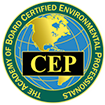On June 30, 2025, the Department of Defense (DoD) published in the Federal Register its new DoD NEPA Implementing Procedures. The procedures establish consolidated NEPA guidance for all DoD Components. In general, as it relates to NEPA review, the DoD components include the Army, Navy, USMC, Air Force, Space Force, and related commands.
Previously, each military department operated under its own NEPA regulations. Each agency-specific regulation reflected the unique character of that service’s mission while demonstrating compliance with NEPA. Loyal Scout blog readers may remember that back on February 25, 2025, the CEQ directed all federal agencies to rescind their NEPA regulations and develop their own NEPA implementing procedures. Thus, these new DoD NEPA procedures are part two of a two-part action published on June 30, 2025. Part one was the repeal of all DoD Component NEPA regulations. Part two was the establishment of these enterprise-wide DoD Component NEPA implementing procedures.
This new DoD NEPA guidance does not aim to replace something broken; rather, it aims to establish a coordinated, consistent, predictable, and timely preparation of environmental reviews. These new procedures focus on streamlining the DoD NEPA process to make informed decisions and expedite proposed DoD actions.
Overall, the DoD NEPA Procedures are consistent with previous DoD-specific NEPA regulations. However, there is now an emphasis on programmatic analyses, focused analyses, flexible standards, and adherence to document page lengths and document preparation times. There is also a new requirement for the responsible official to certify compliance with the page and time limits. We reviewed the full document and here are the most notable takeaways with practical insights for our DoD clients and teaming partners.
1. Use of Multiple Categorical Exclusions (CATEXs): Clear Authority, with Guardrails
The procedures confirm that DoD may apply more than one CATEX to a single proposed action.
“DoD may apply multiple CATEXs to the constituent parts of a single action but must consider whether the aggregate impacts of the constituent parts could give rise to an extraordinary circumstance or result in reasonably foreseeable significant effects.” (Section 1.4(d)(2))
This is a significant clarification, especially following the Ninth Circuit’s recent decision in Friends of the Inyo v. U.S. Forest Service, 103 F.4th 543 (9th Cir. 2024). In that case, the court rejected the Forest Service’s attempt to combine two CATEXs, neither of which alone covered the full scope of the action and held that its regulation required the proposed action to fit within a single CATEX. Melanie co-presented on this case and other NEPA cases earlier this year and emphasized the implications for federal agency CATEX practices. DoD appears to have anticipated this risk by including specific language requiring an aggregate-impact screen, which strengthens legal defensibility and procedural transparency.
2. Extraordinary Circumstances: A More Flexible Standard
Section 1.4(d)(3) reflects a more nuanced approach to extraordinary circumstances than prior DoD and CEQ guidance. Previously, the presence of any extraordinary circumstance often defaulted to preparation of an EA or EIS. The new language shifts that to a weighing standard:
“If an extraordinary circumstance is present, DoD will determine whether the proposed agency action can be modified to avoid those effects, and if so, apply the CATEX. […] The mere presence of an extraordinary circumstance does not necessarily prevent the application of the categorical exclusion.”
This provides more discretion for DoD reviewers, especially in cases involving environmental sensitivity where impacts can be minimized through design or operational controls.
3. One DoD, Many Missions – But Everyone Can Use Each Other’s Categorical Exclusions
The new Appendix A provides a consolidated DoD-wide list of categorical exclusions, but it is still organized by component, including Army, Navy, Air Force, DLA, MDA, and USACE (both Military Programs and Civil Works). This reflects a fundamental reality—each service does different things. Airspace management, range operations, amphibious training, port infrastructure, supply chain logistics, and civil works projects all carry different environmental triggers. It makes sense that their exclusions remain organized by mission set.
At the same time, Section 1.4(f) allows components to adopt and apply another DoD component’s CATEX if it fits the proposed action and meets applicable criteria. This offers new flexibility without undermining the specialized nature of each service’s environmental planning framework.
4. Geographic Scope of Review
The DoD NEPA Implementing Procedures appear to respond to the Supreme Court’s 2025 decision in Seven County Infrastructure Coalition v. Eagle County, No. 23-975 (U.S. May 20, 2025). In that case, the Court limited the required scope of NEPA reviews to the geographic and jurisdictional bounds of the proposed federal action, rejecting arguments that NEPA compels broader program-level or long-distance impact analysis.
DoD codifies that principle with language that states (Section 1.5(c) (for EAs) and Section 2.3(b) (for EISs):
“DoD will document […] where and how it drew a reasonable and manageable line relating to its consideration of any environmental effects from the action or project at hand that extend outside the geographical territory of the project or might materialize later in time.”
This gives DoD Components a clear, court-aligned basis for explaining where and why their NEPA analysis stops, without needing to speculate on downstream, out-of-jurisdiction impacts.
5. Discretionary Consideration of Broader Environmental Effects
The procedures clarify that DoD Components have the option—but not the obligation—to analyze environmental effects that are more distant in time, occur outside the project area, fall under another agency’s jurisdiction, or depend on future third-party actions. This flexibility applies to both EAs and EISs.
If a Component decides that considering such effects would help inform its decision, it must document that reasoning in the record:
“If DoD determines that such analysis would assist it in reasoned decision-making, it will document this determination in the [EA or EIS], and explain where it drew a reasonable and manageable line relating to the consideration of such effects from such separate projects.”
This isn’t an outright rejection of cumulative or indirect impacts. Instead, DoD is providing a structured and transparent way to determine when such broader context is appropriate, without making it a default requirement in every case.
6. EA Deadlines and Page Limits
While the one-year timeline and 75-page target for EAs are not new, what is new is the standardized definition of the EA timeline’s start and end dates. Per Section 1.5(b):
“Typically, the EA start date will be the date of notification to government entities or the public that the DoD Component will be preparing an EA. The EA completion date will be the date that the DoD Component publishes the FONSI.”
This may seem technical, but it’s operationally significant—prior to this, different services used different start and stop points, making EA milestone tracking varied. While we appreciate the attempt to define a common start date, we anticipate that in practice, how each agency chooses to interpret “the date of notification to entities” and when they decide to make a notification will result in variable start dates, even within specific agencies.
Also, there’s a new related requirement: As part of the finalization of EAs and EISs, a responsible official must certify that DoD’s NEPA document represents a good faith effort to abide by the length and time limits. Section 1.5(d)(4):
“The breadth and depth of the analysis will be tailored to ensure that the [environmental analysis] does not exceed this page limit….and in Section 1.5(f)…the [environmental document] reflects DoD’s good-faith effort to fulfill NEPA’s requirements within the Congressional timeline…”
EAs and EISs will require responsible officials certify that the document meets the page and time limits. There is an allowance for exceptions to both, but the guidance encourages proponents to comply with the thresholds.
7. Mitigation in EISs: Careful Positioning
The DoD procedures preserve mitigation documentation in EISs but with an important caveat:
The EIS will include “[a]ny means identified to mitigate adverse environmental effects of the proposed action. DoD is mindful in this respect that NEPA itself does not require or authorize DoD to impose mitigation measures.” (Section 1.6(c)(6))
This is a strategic legal position. It acknowledges NEPA’s procedural limits and protects DoD from claims that it must commit to mitigation beyond its statutory or regulatory authority. Typically, mitigation measures are identified through regulatory consultations in accordance with other environmental laws (e.g., the CWA or ESA).
8. Reliance on Other Agency Documents
DoD may rely on EISs, EAs, or CATEX determinations from other agencies under certain conditions. Section 1.4(g) allows this:
“DoD Components may rely on another agency’s EIS, EA, or portion thereof, or a determination that a specific agency action is covered by a CATEX, provided that the EIS, EA, or CATEX meets the standards for an adequate environmental document or determination under these procedures.”
This creates welcome efficiency for interagency and joint-federal actions, while preserving review quality.
9. Reliance on Other Agency Documents
The procedures emphasize that DoD will not undertake new research and will use existing data. Section 3.7(a):
“DoD will not undertake new scientific and technical research to inform its analyses unless that is essential to a reasoned choice among alternatives…DoD will make use of reliable existing data and resources.”
This is consistent with recent NEPA case law that supported how federal agencies used existing data to inform their decision making. By having the backing to rely on existing data or explain why obtaining new data is not feasible, this should support faster document preparation times and avoid lengthy and sometimes over-scoped studies.
10. What’s Missing?
There is no mention of the effective date for the guidance. Does it apply to new NEPA documents initiated after July 1, 2025? Or do agencies have to overhaul their existing NEPA documents to reflect the new guidance? We anticipate each DoD Component will define the “effective” application date of these regulations to their on-going and new projects.
The regulations also do not specify the length of public review periods for EAs and EISs. Previously each DoD agency specified a minimum duration. We anticipate this too will be defined.
11. Final Thoughts
With more than 50 combined years of NEPA experience supporting DoD, we have seen firsthand that these agency-specific NEPA regulations worked. Now, DoD’s new NEPA procedures represent a significant investment in giving Components the tools they need to meet mission demands while maintaining environmental accountability and fostering consistency.
We work with DoD clients every day who are focused on moving projects forward, doing the right thing, and staying compliant with NEPA—without getting bogged down in unnecessary delays or second-guessing. From our perspective, these new procedures offer expanded flexibility, particularly through the broader use of CATEXs, the ability to apply multiple exclusions to a single action, and more discretion in setting reasonable bounds on scope. We look forward to partnering with our clients in leading the way to preparing more focused NEPA documents, faster, while continuing to comply with NEPA.
These changes should give DoD NEPA planners more confidence, and in many cases, a stronger defense against litigation, which is often what slows things down the most. The new rule isn’t about fixing a broken system—it’s about equipping agencies with more consistent and defensible NEPA authority to keep the mission moving.
Have questions or want to talk through how this may affect your next project?
Email us at hello@scoutenv.com. We’re here to help.













